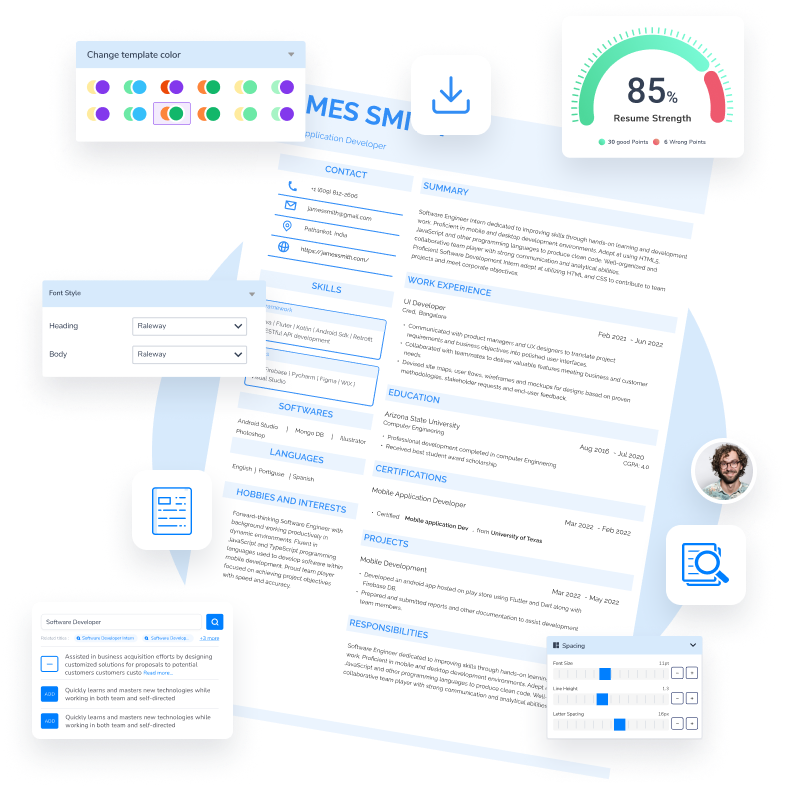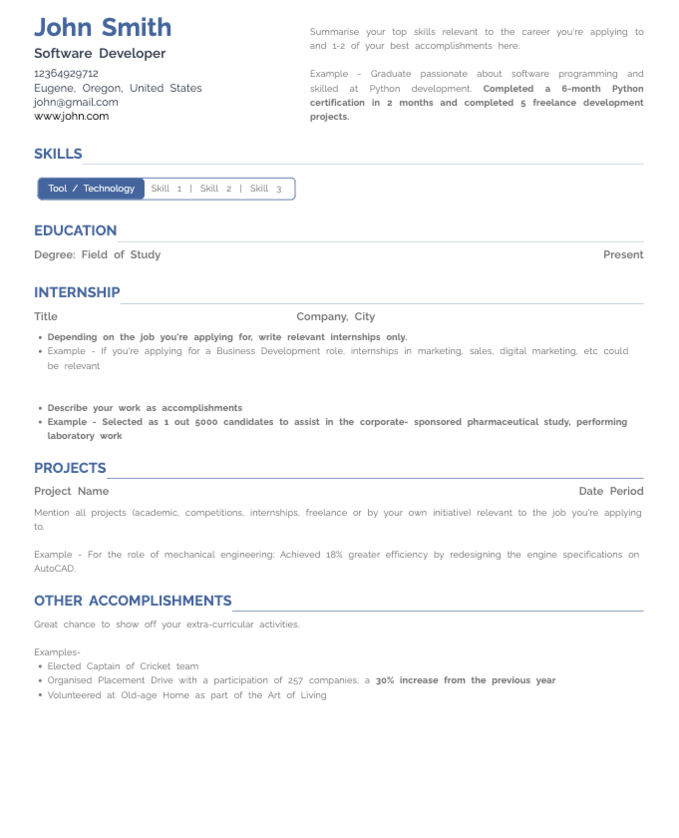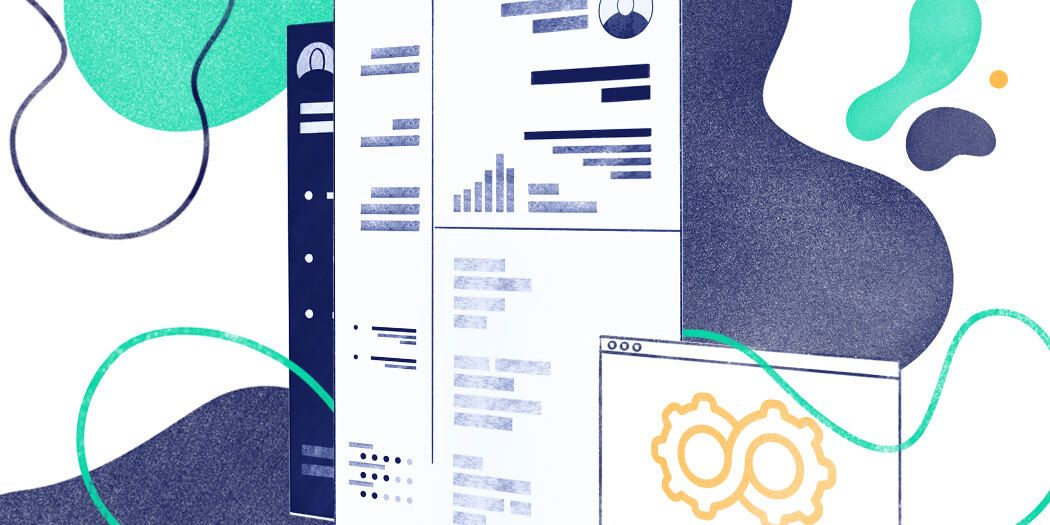12+ Tips to Build a Professional Resume For Data Engineer Jobs
6 min read

How to build a data engineer resume?
You are on the right webpage if you are seeking answers to similar questions. Here you will get every essential guideline for crafting a professional resume for data engineer jobs.
The Data Engineering market is growing exponentially in India. According to a report by Hero Vired, the Indian data engineering market was estimated to be $18.2 bn in 2022 and is expected to grow up to $86.9 by 2027.
Hence, if you are looking for a data engineering job, you are on the right path to success. We are determined to answer all the fundamental questions regarding a career in data engineering that includes:
- What is the difference between a data engineer, a data scientist, and a data analyst?
- What are the fundamental responsibilities of a data engineer?
- How to use the job description to build a data engineer resume?
- How to build a resume for data engineer jobs?
The answers to these questions will help you frame a job-winning resume for data engineer jobs. However, you must remember that resume-building is a time-consuming process.
If you are running out of time, we recommend using HyreSnap Online Resume Builder. It is an AI-powered online resume making platform that can help you craft a professional data science resume in easy steps.
Considering that you do not have any time limits, we are listing the essential guidelines to build an impeccable resume for data engineer jobs:
Data Engineer, Data Scientist, and Data Analyst are three distinct roles within the field of data and analytics, each with its own set of responsibilities and skill sets. Here's a breakdown of the key differences between these roles:
Data Engineer
A Data Engineer focuses on developing and maintaining the infrastructure and systems that enable data collection, storage, and processing. Their responsibilities include:
- Building and managing data pipelines and ETL (Extract, Transform, Load) processes.
- Designing and maintaining databases and data warehouses.
- Ensuring data quality and integrity.
- Collaborating with data scientists and analysts to provide them with clean and structured data.
- Working with big data technologies and cloud platforms.
Skills required for a Data Engineer role typically include programming languages like Python or Java, knowledge of SQL and database management systems, proficiency in data modelling and schema design, and experience with data integration and processing frameworks.
Data Scientist
A Data Scientist analyzes complex data sets to uncover patterns, extract insights, and develop predictive models. Their responsibilities include:
- Defining research objectives and formulating hypotheses.
- Collecting, cleaning, and analyzing data.
- Developing and implementing statistical and machine learning models.
- Interpreting and visualising data to communicate findings.
- Collaborating with cross-functional teams to solve business problems.
Skills required for a Data Scientist role include expertise in programming languages like Python or R, statistical analysis and modelling techniques, machine learning algorithms, data visualisation, and strong problem-solving skills.
Data Analyst
A Data Analyst focuses on extracting and interpreting data to generate meaningful insights and support data-driven decision-making. Their responsibilities include:
- Collecting and analysing data from various sources.
- Identifying trends, patterns, and correlations in the data.
- Creating reports, dashboards, and visualisations to present findings.
- Collaborating with stakeholders to understand business requirements.
- Conducting ad-hoc analyses and answering specific business questions.
Skills required for a Data Analyst role include proficiency in SQL, data querying and manipulation, data visualisation tools like Tableau or Power BI, basic statistical analysis, and strong analytical and communication skills.
While there is some overlap in skills and techniques used, the main distinction lies in the focus and depth of expertise in each role.
The fundamental responsibilities of a Data Engineer include the following:
- Data Pipeline Development: Designing, building, and maintaining data pipelines that collect, transform, and load data from various sources into storage or analytics systems.
- Data Integration: Combining data from different sources, such as databases, APIs, or files, and ensuring the integrity and consistency of the integrated data.
- Data Storage and Management: Setting up and managing data storage systems, such as data warehouses, data lakes, or NoSQL databases, to store large volumes of structured and unstructured data.
- Data Transformation and Processing: Transforming raw data into a format suitable for analysis or consumption by other systems, performing data cleansing, aggregation, or enrichment processes.
- Data Modeling and Schema Design: Designing and implementing data models, schemas, or data structures that support efficient data storage, retrieval, and query operations.
- Performance Optimization: Tuning and optimising data processing and query performance to ensure efficient and timely data retrieval and analysis.
- Data Quality and Governance: Implementing data quality checks, validation rules, and data governance practices to ensure data accuracy, completeness, and regulation compliance.
- Data Security and Privacy: Implementing data security measures, encryption, access controls, and privacy protocols to protect sensitive data and ensure compliance with data protection regulations.
- Collaboration with Data Analysts and Data Scientists: Collaborating with data analysts and data scientists to understand their data requirements, providing them with clean, reliable, and well-structured data for analysis and modelling.
- Monitoring and Maintenance: Monitoring data systems, pipelines, and processes to identify and resolve issues or bottlenecks, performing regular maintenance tasks like backup, recovery, and system updates.
- Documentation and Communication: Documenting data engineering processes, data flows, system configurations, and data dictionaries to ensure clarity, knowledge sharing, and effective communication within the team and across stakeholders.
You can use your selected data engineer job description to get some profile-centric keywords and know all the job requirements.
Below you can see an example job description for a data engineer profile. We have highlighted some keywords present in the job description. You can use a similar technique to get keywords for your selected profile.
Data Engineer Job Description Example:
We are looking for a talented Data Engineer to design, develop, and maintain our data infrastructure, pipelines, and systems. As a Data Engineer at VBN Technologies, you will play a crucial role in ensuring our data ecosystem's availability, reliability, and efficiency. You will collaborate closely with data scientists, data analysts, and other cross-functional teams to support data-driven initiatives and enable advanced analytics.
Responsibilities
>Design, develop, and maintain scalable and efficient data pipelines and ETL processes to collect, transform, and load data from various sources into our data storage systems.
>Integrate and consolidate data from diverse sources, ensuring data quality, consistency, and integrity.
>Design and implement data models, schemas, and structures to support efficient data storage, retrieval, and query operations.
>Optimise data processing and query performance to ensure timely and efficient data retrieval and analysis.
>Collaborate with data scientists, data analysts, and other stakeholders to understand data requirements and provide them with clean, reliable, and well-structured data.
>Implement data security measures, encryption, access controls, and privacy protocols to protect sensitive data and ensure compliance with data protection regulations.
>Monitor data systems, pipelines, and processes to identify and resolve issues, perform regular maintenance tasks, and ensure system stability and availability.
>Document data engineering processes, data flows, system configurations, and data dictionaries for knowledge sharing and effective communication within the team.
Requirements
>Bachelor's degree in Computer Science, Engineering, or a related field.
>Proven experience as a Data Engineer or similar role, designing and implementing data pipelines, ETL processes, and data storage solutions.
>Strong proficiency in programming languages such as Python, Java, or Scala.
>Experience with database technologies, both relational and NoSQL databases.
>Familiarity with big data technologies and distributed computing frameworks like Hadoop, Spark, or cloud-based data platforms.
>Solid understanding of data modelling, schema design, and data warehousing concepts.
>Proficiency in SQL and query optimization techniques.
>Strong problem-solving skills and attention to detail.
>Excellent communication and collaboration skills to work effectively in cross-functional teams.
To build a professional data engineer resume, consider the following tips:
- Choose the right resume format: Opt for a clean and organised format, such as reverse-chronological or combination format, highlighting your relevant skills, experience, and accomplishments.
- Start with a compelling summary or objective statement: Write a concise summary or objective that highlights your key qualifications, expertise, and career goals as a data engineer.
- Highlight your technical skills: Emphasise your proficiency in relevant technical skills such as programming languages (Python, Java, etc.), database technologies (SQL, NoSQL), ETL tools, big data frameworks (Hadoop, Spark), and cloud platforms (AWS, Azure, GCP).
- Showcase your experience: Provide detailed information about your previous work experience, focusing on data engineering projects, responsibilities, and achievements. Highlight your ability to design and develop data pipelines, integrate and cleanse data, optimize performance, and collaborate with cross-functional teams.
- Demonstrate your technical projects: Include a section that showcases your personal or professional projects related to data engineering. Describe the problem you solved, the technologies used, and the outcomes achieved.
- Highlight your educational background: Mention your degree, major, and relevant certifications or training programs related to data engineering or data management.
- Quantify your achievements: Whenever possible, quantify your accomplishments with metrics or numbers. For example, mention the size of datasets you handled, the performance improvements you achieved, or the impact of your work on business operations.
- Include relevant keywords: Incorporate relevant keywords and phrases from the data engineering field throughout your resume. This will help your resume pass through applicant tracking systems (ATS) and increase its visibility to recruiters.
- Showcase your problem-solving and analytical skills: Data engineering involves problem-solving and analytical thinking. Highlight projects or experiences where you successfully solved complex data challenges or implemented innovative solutions.
- Proofread and edit: Ensure that your resume is error-free and well-polished. Proofread it thoroughly for grammar and spelling mistakes, and ask someone else to review it as well.
- Customise for each job application: Tailor your resume for each job application by aligning your skills, experiences, and achievements with the specific requirements mentioned in the job description.
A cover letter is an important component of your job application as a data engineer. Here are some key reasons why a data engineer cover letter is important:
- Personalises your application: A cover letter allows you to introduce yourself and provide context to your application. It helps you establish a personal connection with the hiring manager by showcasing your interest in the position and the company.
- Highlights your relevant skills and experiences: A cover letter allows you to elaborate on your skills, experiences, and accomplishments mentioned in your resume. You can provide specific examples of how you have successfully designed and implemented data pipelines, optimised data processes, or solved complex data challenges.
- Demonstrates your enthusiasm and motivation: A well-written cover letter allows you to express your genuine interest and enthusiasm for the data engineering role. It shows that you have taken the time to research the company, understand its needs, and explain how your skills align with its requirements.
- Addresses any gaps or unique circumstances: If you have gaps in your employment history or unique circumstances that need clarification, a cover letter provides you with an opportunity to proactively address those issues. You can explain any career transitions, extended breaks, or changes in your field of work.
- Showcases your communication and writing skills: As a data engineer, effective communication is essential. Your cover letter serves as a writing sample, demonstrating your ability to articulate your thoughts clearly, concisely, and professionally.
- Differentiates you from other candidates: A well-crafted cover letter sets you apart from other applicants. It allows you to highlight specific reasons why you are a strong fit for the position and how you can contribute to the organisation's data engineering initiatives.
- Demonstrates your attention to detail: Your cover letter should be well-structured, error-free, and tailored to the specific job you are applying for. It showcases your attention to detail and professionalism, which are crucial qualities for a data engineer.
Considering the high job market competition, HyreSnap has developed its Online Resume Builder. It will help you skip all the resume-building complexities and craft a job-winning resume for data engineer jobs in easy steps.
Below you can see the highlighting features of this 21st-century resume-building platform:
We have listed all the essential steps to frame a professional data engineer resume in 2023. Furthermore, you can see the key points of this guide to cover everything you missed by now:
- Search and read the job description to pick profile-centric keywords
- Outline your resume by adding every essential resume section heading
- Add your technical and key skills separately for a better understanding
- Write all your resume details in bullet points except your resume summary
- Write your resume summary after completing your entire resume
- Highlight important information and keywords wherever possible
- Proofread your resume after taking a halt for a precise presentation
Apart from this, you can contact our experts at info@hyresnap.com for any other career-building assistance. We will help you get a suitable job and build a bright career in this highly competitive era.

Try Now for Free!




